RPA or Robotic process automation is a software technology that makes it easy to build, deploy and manage robots that mimic human activities and establish communication with digital systems and software. Similar to humans these robots can understand the screen, keyboard commands, navigate systems, extract data and can perform various defined actions. But unlike humans, robots can do all such activities faster than humans without any need to stretch, or take a coffee break.
Let’s delve deeper and know how software robots mimic human actions on computers. Below is the explanation on how RPA works:
Interfacing with user interfaces (UIs): RPAs can connect with graphical user interface (GUI) of applications. These robots can click on the buttons, type text in the boxes, go through the menus and can even understand the data given on the screen.
Following predefined rules: These robots follow predefined logic and rules to take any decision or perform actions. Thus, allowing these robots to execute tasks in a systematic way. For example, an RPA tool can be programmed to take out specific data from emails and mention it into a spreadsheet based on certain criteria.
Integrating with APIs: RPAs can not only interact with software, but can also integrate with APIs (Application Programming Interfaces). This feature results in faster, robust and error-free exchange of data as it enables direct exchange of software systems at code level, thus no need for UI interaction.
Employing Optical Character Recognition (OCR):To fetch data from scanned documents and images, RPA employs OCR technology. This feature is especially important to process forms, and other paper documents that need to be converted digitally by entering into an electronic system.
Benefits of RPA
RPA robots are used in various verticals to automate the routine activities. These robots can transform the business and work well with rule-based tasks. RPA has brought a new revolution for many organizations. This user-friendly and simple software saves a lot of time and money and keeps your employees free from monotonous tasks.
Below we will discuss the top benefits of RPA. So, let’s start:
Productivity
While for humans certain tasks may take days or weeks to perform, an RPA bot can complete it without hours or even minutes. This increases productivity of the organization. But this doesn’t imply that RPA is taking jobs of employees, it instead eases the work of employees making them and the company more productive.
Reduced error- Attain Accuracy
Accuracy brings quality and consistency in the work. RPA completes different activities like data entry or form filling without any error. This increases the quality of work resulting in 100% accuracy. This is especially important in case of customer-facing or sensitive data work.
Scalability
Through RPA you can expand and scale up your business by increasing your task capacity. Also, by catering better quality work to the client through RPA you can increase the demand of your services. Hence implementation of RPA in any business is the best way to optimize the business in a better manner to scale up the complete workflow and connect various departments, systems and people.
Customer Satisfaction
Delivering the best quality services to your client will enhance their trust and satisfaction towards your business. One small mistake can reduce the reputation of your organization and the possibility of mistakes increases in human work. Hence through RPA your customers will receive high quality work and thus they may recommend your brand to others and will continue to avail your services for longer duration.
Employee satisfaction
Keeping your employees free from the tedious tasks will allow them to emphasize more on higher-value tasks of the company. There are also opportunities for employees to learn automation technology and upgrade their skills which is good for their career growth.
Resource Allocation
Repetitive tasks performed by humans may contain errors. By assigning such tasks to RPA, your company can allocate more effective and strategic tasks to employees. RPA can deliver larger amounts of tasks in shorter duration, thus reducing delivery time.
Communication
RPA tools can automate the tracking process and manual work and thus can streamline the employees’ communication. This tool also ensures that organizations work is carried out in minimum time with accuracy. With RPA it also becomes easy to collect data from various systems which later on can be converted into meaningful insights to help in process integration.
Security
Data privacy and cybersecurity are the two major concerns for any company. With RPA solutions companies can reduce the security threats by minimizing the handling of human employees with sensitive data. Thus, the RPA tool reduces the chances of data breaches or data leaks ensuring high-level data security. RPA can also provide you security against unauthorized user access through two-factor authentication and triggered account logouts.
Analytics
RPA allows companies to fetch accurate data from different sources and thus improve their analytics part. This tool can gain real-time insights in their automated process to ensure that the complete process aligns with the strategic business outcomes.
The benefits of RPA don’t stop here. This tool improves your business ROI, enhances compliance and makes the organization more agile.
Use cases of RPA
RPA has given a new direction to various business operations by automating the monotonous activities. Now, let’s discuss the real-world examples and advantages of RPA in different sectors:
Banking and finance
- Automate fraud detection: RPA tool monitors all the real-time transactions and can detect any fraudulent activity. Such early identification can help banks to reduce the losses and safeguard customers’ accounts.
- Loan processing: Through RPA banks can streamline the loan approval process. This tool verifies the authentication of application data, and credit scores to minimize the processing time and maximize customer satisfaction.
Human Resources
- Onboarding and recruitment: By automating the process of resume screening, interview scheduling and onboarding paperwork management, HR teams can save their time and focus on administrative work. This makes them focus on strategic tasks.
- Payroll Processing: Through RPA companies can automate their complete payroll process. This ensures timely delivery of payment to employees and compliance with tax regulations.
Healthcare
- Patient appointment scheduling: Through RPA healthcare providers can manage appointments. This tool can work with scheduling systems and can communicate with patients to book appointment slots and reduce waiting time.
- Claims processing: RPA verifies the claims against policy terms and processes them. Thus, the entire procedure becomes fast and accurate.
Retail
- Inventory Management: RPA can monitor inventory levels, can reorder the products when the stock is low and can update the inventory record. Thus, this tool ensures product availability without any delay.
- Customer support: Through RPA companies can handle customer inquiries automatically. They can track status, and returns or exchanges. It frees up the routine work of human agents and allows them to handle complex customer issues.
Telecommunications
- Network management: RPA monitors the network performance in real-time and can inform about any error to be reviewed by humans. This increases the quality of service.
- Customer onboarding: Automating the processes like customer account creation, and account activation improves process efficiency and customer satisfaction.
How to implement RPA
There are various steps involved in implementation of RPA. Let’s know about them:
Identify process: Find out which process of your organization you want to automate. Choose the repetitive tasks, as they consume much time and are prone to human errors.
Assess feasibility and ROI: Once you choose the process that needs automation, you must consider the aspects like process complexity and savings with automation. Also, calculate the ROI once you automate the process to ensure that the complete process makes financial profit.
Choose RPA tool: Look for the RPA tool which is best suitable for your company’s needs and budget. Some of the popular RPA tools are UiPath, Blue Prism, and Automation Anywhere. You must consider the integration capabilities, scalability and support of any tool while choosing one.
Plan and design: You must do planning of your automation project and workflow design. Break the entire process into small and manageable tasks and come up with sequential steps which RPA bot can follow easily. Define, input, output, triggers and exceptions.
Develop Automation Scripts: With the RPA tool you selected, create an automation script. Many RPA tools come with visual designers or script editors, through which you can come up with automation workflows without any code. However, you may require some programming knowledge to perform complex tasks.
Testing: Once the automation script is ready, it’s the time to check it properly to ensure that the tool works as expected and performs all your activities. You must do a user acceptance test (UAT) with your stakeholders to take their feedback and do the required changes.
Deployment: After testing you must deploy the script into the production environment. Ensure about the required environment to support the bot, for example dedicated servers and virtual machines.
Monitoring and management: Monitor the bot performance and ensure that they are working as per expectation. Check the throughput, efficiency and accuracy. You must update the automation scripts regularly to make them adapt with the new changes or processes.
Scale Up: Once you have implemented RPA for one of your tasks, you can look for other processes that too need automation. You can scale up the adoption of RPA across your organization.
Training and Support: Provide appropriate training to the employees working on RPA bots. Train them on how to work with automation and how to interact with the bot. Establish a support system to resolve the issues that may come.
Continuous improvement: Evaluate the RPA performance and avail the opportunity of improving it further. Take feedback from the stakeholders and users and ensure to incorporate it in its future iterations.
How to select the right RPA tool for your needs
It is crucial that the RPA tool you have selected should match with your company’s objective and needs.
Below are some key aspects to consider while selecting RPA tool:
- Ease of implementation: Your RPA tool should easily integrate with your existing systems and ensure less downtime with smooth transition.
- Easy to use: Pick up the user-friendly tool that needs less training and is flexible to manage basic automation processes. The tool should require less programming so that even a business analyst can use it.
- Speed: The tool should speed up the process to complete it quickly and efficiently.
- Technical features: Tool should have features like scalability, cognitive capabilities, screen scraping and robust security to safeguard sensitive data.
- Ownership cost: You must consider the cost of license fee, vendor fee, and maintenance cost of the tool.
- Scalability: Your RPA tool must support different robots and should be flexible enough to expand its usage in the company
- Architecture: Your tool design should meet the company’s need and must have the knowledge to utilize it to the fullest.
- Exception handling: Look for an RPA tool that has expertise in error detection and handling capabilities. This feature is important when your process is prone to errors.
- Vendor support: You must have strong vendor support for technological updates, efficient deployment and employee training.
How to hire right RPA talent
While you are on the journey of recruiting RPA developers for your company, you need to streamline your approach to make the difference. Below are the steps you must follow to hire the best candidate for your organization.
Step 1: Understand your project requirement
You must have a clear idea about your project requirement before initiating the hiring process. Follow the below actions:
- Choose a particular task or process which you want to automate with the RPA tool. Such tasks may include data entry work, repetitive data validation or report generation.
- Calculate the expected benefit of automation. This may include accuracy, efficiency, savings and customer satisfaction
- Mark the boundaries and objectives of your automation project while looking for the suitable candidate.
- Having a grasp of your objective will allow you to effectively articulate your requirements to potential RPA developers.
Step 2: Create compelling job description
Your job description will be the first point of contact with the potential RPA developers. Consider the below-mentioned tips to create a compelling job description
- Accurately define the desired qualification, responsibilities and expectations from the RPA developer. Maintain transparency regarding job entails.
- Let the candidates know about the opportunities they can avail in the automation field. Emphasize on the potential impact candidates can make with their automation skills.
- Convey your company’s values, mission and commitment in a clear language.
- A compelling job description can attract top talent and convince them about mutually beneficial partnership.
Step 3: Look for candidates through diverse channel
Getting the right rpa staffing for your company requires searching through various channels. Follow below strategies to get the right candidate:
- Make use of job boards, both specialized and general in technology fields.
- Take advantage of professional networks like Linkedin to establish connections with potential candidates.
- Look for candidates on social media platforms, where you can know the developers’ interest and skills.
- Get in touch with staffing agencies with a proven record of expertise in RPA recruitment.
- By diversifying the channel, you may increase the possibility of finding qualified professionals who may not be looking for a job change, but are open for new opportunities.
Step 4: Evaluate technical proficiency
You must test the technical knowledge of the candidate while hiring. Consider below strategies:
- Inquire about the live examples to evaluate the candidates’ capacity to provide successful automation solutions. Such real-time situations will let you understand their problem-solving skills.
- Take coding tests and technical assessments to evaluate their knowledge on programming and RPA tools.
- Know their knowledge on RPA platforms like Automation Anywhere, UiPath or Blue Prism. Also check their ability of choosing the best tool for a particular task.
Step 5: Access project experience
To ensure that the hired candidate is ready to tackle real-time challenges, you must check their project experience:
- Know about their previous automation experience, including complexities handled, scope of work and results achieved. The rich project history will reflect their proficiency in automation.
- Request testimonials from the previous client or employer to know the candidate’s involvement and performance in the project
- A candidate who has experience in working with related projects can work immediately on your project and can give a valuable contribution toward the company’s automation initiatives.
Step 6: Evaluate teamwork and cultural fit
RPA developers need to work in collaboration within the company and hence you must evaluate the teamwork skills and cultural fit of the candidate.
- Check the compatibility of the candidate with your company’s value, culture and work ethics. The hired candidate must align with your team’s goals and principles.
- Evaluate their interpersonal and communication skills. RPA developers need to communicate frequently with the stakeholders, business analyst, end-users and IT teams
- A culturally fit candidate will ensure smooth collaboration with your existing team.
Step 7: Conduct thorough interview
Through proper interviews you can get deeper insights about candidates’ skills and capabilities.
- Through hypothetical automation conditions, you can check their problem-solving skills and can discuss potential solutions.
- Know their adaptability with the new technology by knowing their willingness to work with new RPA tools.
- Know their approach towards automation projects. Know about their previous experience and challenges and how they overcome them.
- Take behavioral interviews and check the instances where the candidates have handled challenges, showed leadership skills and worked in a team.
- In-depth interviews will not only give you a holistic view of the candidates, but will also let you know about their match with your company’s culture and objectives.
You must follow the above steps to enhance your chances of getting an ideal candidate for your organization. To maintain a productive and innovative automation environment within your organization it is crucial to follow all the steps.
You can even take help from a RPA recruitment agency to get the best match for your company with their help.
Importance of hiring right talent for RPA deployment
Hiring a suitable candidate for RPA deployment can be a gam
e changer for you because of several reasons. Let’s know about them:
Technical Expertise: RPA deployment needs candidates that have good knowledge of RPA tools and platforms. Hiring candidates with desired skills will ensure that they can design, develop and maintain proper automation workflow. These resources are proficient in RPA tools as well as programming languages like Python, Java, C# etc based on the project requirements.
Process Understanding: You must hire a candidate who has excellent business process knowledge which is being automated. They should know the rules, workflows, and exceptions involved in the process. Through such skills they can identify automation opportunities, come up with automation solutions and can ensure that the RPA tool works as per expectations.
Problem-solving skills: RPA deployment is full of technical challenges and integration of automation solutions with the existing systems. Candidates with excellent problem-solving skills can address the issue quickly, optimize the workflow and provide solutions to overcome the deployment issues.
Change management: RPA implementation demands cultural transformation and change in organization process. Recruiting candidates with management skills will ensure smooth adoption of new technology in the whole organization. Such candidates can interact with the stakeholders and can manage the resistance to change. They can also train other employees on the automated system.
Project Management: Project management skills are important in a candidate to ensure on-time delivery of the project, within budget and as per the desired specifications. Such proficient candidates can plan, execute and track the RPA tool activities in a better way. They can communicate with a cross-functional team, handle project risk and can monitor progress to achieve automation goals.
Continuous improvement: RPA deployment requires continuous changes and optimization. Hiring an employee ready for continuous improvement will help companies to find out opportunities and improve automation solutions to maximize efficiency and minimize cost over time.
Overall, hiring a suitable candidate for RPA deployment can ensure project success and sustainability. By hiring a knowledgeable and skilled team you can streamline your RPA process to meet the business objectives.
If you are looking for suitable RPA deployment with strong technical knowledge then Time agency can help you out. We can help you in RPA hiring to ensure you get the best match for your organization.
The future of RPA
Overall RPA has a bright future as it will automate repetitive tasks to ease up the work and there are organizations who are hiring RPA professionals by outsourcing this work to RPA staffing companies. Let’s talk more about the future of RPA in-depth.
Simplified process with no-code RPA
No-code RPA has brought a significant revolution in democratizing automation. Through such RPA tools most of the users including business analysts, citizen developers and power users can automate the process without requiring any coding knowledge. These RPA tools facilitate drag and drop interfaces, thus enabling users to deploy automation easily.
No-code RPA comprises pre-built templates and connectors, to simplify the entire automation activities. This accessibility allows various departments of the company to streamline their process independently. Also, this easy interface eliminates the dependency of the professionals on the IT department, resulting in fastest implementations and cost-savings.
No-code RPA has transformed a predominant IT-driven solution to business-driven tool, to make the entire process more agile and adaptable to business needs.
Leveraging process mining for RPA
Through process mining businesses are able to visualize and analyze data in real-time. This process maintains transparency by highlighting the steps involved in workflows, time required for each step completion and the bottlenecks in the process which are impacting the business efficiency. Such a heap of knowledge is valuable for RPA.
Through integration of RPA and mining processes, businesses can know the exact process where automation can provide significant value. Through RPA workflows companies can target the right steps and thus can enhance efficiency and minimize errors. Also, process mining can document the process accurately which is an important step for audit and compliance purposes.
The rise of ML and AI in RPA
Machine Learning (ML) and Artificial Intelligence (AI) has become an indispensable part of the RPA future. AI-powered RPA can not only perform predefined tasks, but can learn from the data to improve their performance and decision-making capabilities.
For example, an AI enabled RPA tool can analyze customers orders by going through their historical data to identify patterns. These bots can predict the delays or errors of particular orders and can take actions to resolve the issue. Such an advanced automation level allows companies to handle even the complex processes with ease.
AI and ML not only increase the efficiency of RPA tools, but also make them capable of handling dynamic scenarios. This emerging trend is making RPA a smart automation solution.
The transformation towards cloud-based RPA
Cloud-based RPA is preferred by many companies because of its ease of deployment, scalability and cost-effectiveness. It adds desired flexibility in the business, allowing them to quickly scale up or down the tasks as per the requirements. Thus, it allows organizations to address the fluctuation loads or seasonal demand.
Integration of RPA on cloud is a very straightforward method. Companies need to create an account with a cloud provider followed by the installation of client applications in the bot. Such ease of work minimizes the time to initiate the project, allowing companies to avail the benefits immediately.
With cloud-based RPA companies can avail the benefits of automatic maintenance and updates. This decreases the burden on the IT team and ensures the security of RPA infrastructure. This migration to cloud allows companies to embrace cloud technologies to make the process more agile.
RPA as a service (RaaS)
With RPA as a service (RaaS), RPA is transformed to a subscription-based model to avail automation features. Through such models, companies can reduce the requirement of significant upfront investment, thus making it easy for even small and mid-size companies to access RPA.
RaaS has come up with monthly or yearly charges. This simplifies budgeting and allows companies to scale up the business by availing RPA as per their increasing needs. This flexibility is extremely important in this rapidly changing environment, where cost and adaptability are the two crucial factors.
Also, many RaaS providers come up with extra services like support, maintenance, and training. This again makes it easy to adopt and manage RPA solutions.
Conclusion
RPA has great potential to give new direction to businesses. This tool allows organizations to automate their repetitive tasks, so that employees can emphasize more on higher-value tasks that demand critical thinking and creativity. This improves productivity and efficiency of the workflow.
Moreover, with RPA implementation, companies can reduce errors which are involved in manual processes. By minimizing mistakes, companies can achieve client satisfaction, maintain compliance and save their valuable time.
Furthermore, through RPA companies can achieve scalability and agility in the organizations, as through automation they can easily handle fluctuations and change in business needs. Such scalability allows them to address the market dynamics and remain ahead in the competitive market.
Additionally, RPA allows employees to remain away from repetitive tasks, thus maintaining an engaged and motivated environment. This in turn results in higher innovation and employee satisfaction.
Overall with RPA implementation organizations can boost up accuracy, reduce costs, and empower their workforce to achieve sustainable growth and future success.
As more and more companies are adopting digital transformation, it is essential to understand the basics of RPA to give a tough competition to your competitors.






